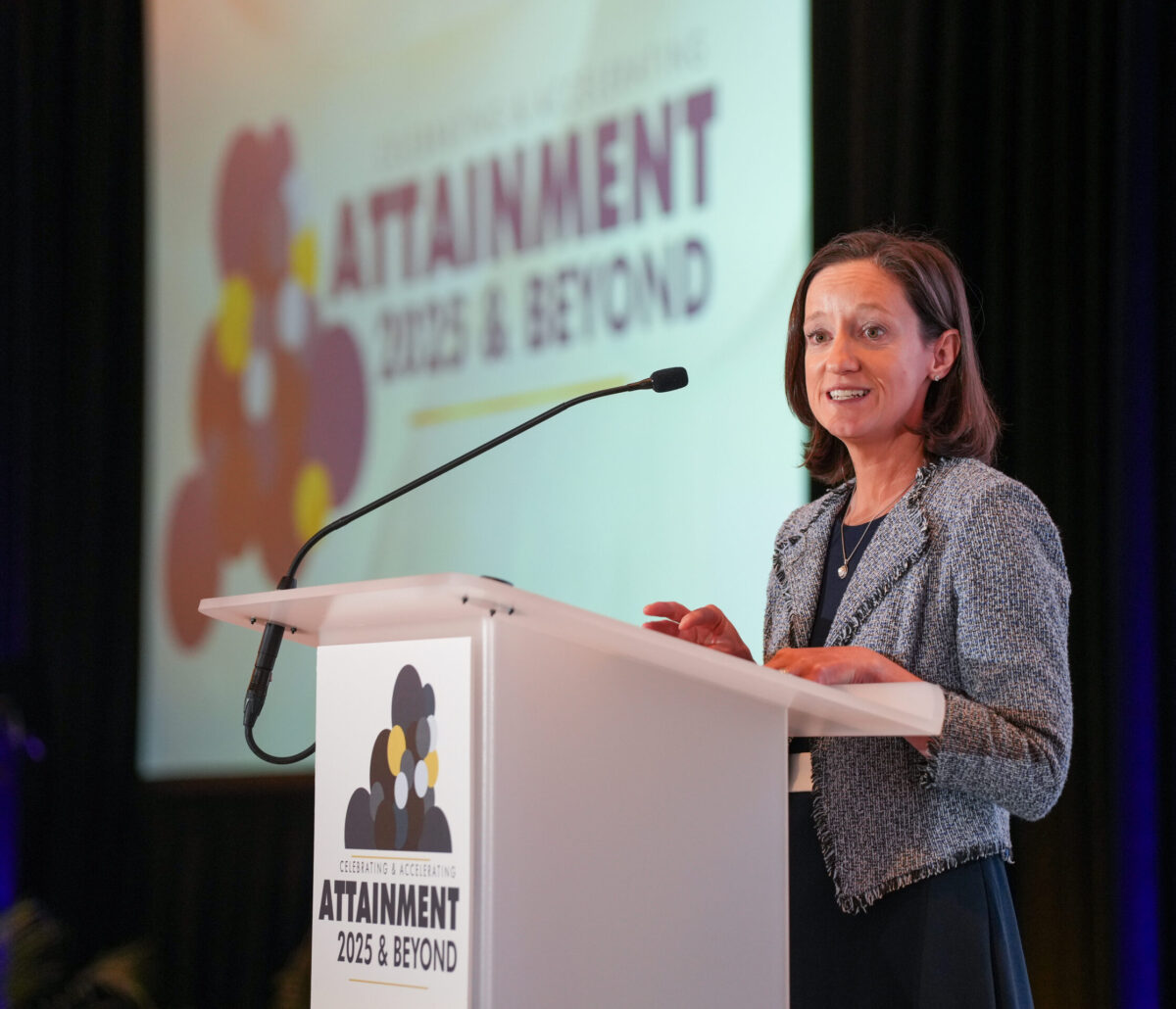Significant Shifts In Indiana Policy Priorities Over Time Increase State Residents’ Ability To Access And Succeed In College
Published May 13, 2014
Washington, D.C., September 17, 2008— When it comes to improving access and success in higher education to the benefit of the whole state, Indiana is at the nation’s forefront. This achievement can be credited to bipartisan efforts by key decision makers—policymakers, business leaders, and education officials—who continue to address some of the state’s major educational issues through a process of evolutionary change that gave a seat at the table to all interested parties. Due in large part to those efforts, more than two-thirds (68 percent) of Hoosier high school students completed a college preparatory curriculum in 2006, compared with only 12 percent in 1994, and more than 65,000 additional students have enrolled in college in the state since 2001.
According to a new report by the Institute for Higher Education Policy (IHEP), Indiana has made considerable progress in increasing college access over the last several decades. The study, Creating Change One Step at a Time: Efforts to Improve College Access and Success in Indiana, offers a glimpse at the interventions Indiana has undertaken in the areas of academic preparation, higher education affordability, and a diversified system of higher education.
Examples of Indiana’s Initiatives in Creating a College-going Culture
- The Core 40 diploma—which requires students to take four years of English, three years of math through at least Algebra II, and three years of science—was created to improve academic preparation for high school graduates and is now required for nearly all students.
- As a part of a commitment to provide need-based grant aid, Indiana awards approximately 86 percent of all undergraduate student aid based on financial need alone (rather than on academic merit or a combination of need and merit), compared with a national average of 49 percent.
- The establishment of a statewide community college system, Ivy Tech Community College of Indiana, offers more affordable postsecondary options, especially for working adults and for underserved groups such as low-income and minority students.
“By focusing its efforts on a clear policy goal—increasing college access and success—Indiana has been able to achieve a series of significant postsecondary policy changes that we hope will lead to a myriad of successful outcomes,” said IHEP President Michelle Asha Cooper, Ph.D. “We applaud the state and its efforts to aggressively push through bureaucratic policy mazes to embrace bipartisan amendments resulting in the creation of a college-going culture among Hoosier residents.”
Indiana’s Key Steps in Creating Change
The report highlights several key practices that have enabled Indiana to create substantial changes in the educational policy arena. These include:
- Recognizing the need for change and expressing that need to all stakeholders.
- Moving forward incrementally without letting initial setbacks stop the process of change.
- Using data to inform policy decisions. The work of experts inside and outside the state can provide a range of options to address identified problems.
- Connecting to national organizations working in the same areas. These connections offer support in developing new policies and links to other states that may have similar concerns or experiences.
- Seeking financial support for new policy initiatives from nonprofit organizations, foundations, and the federal government.
- Building public support through transparency and aggressive communication efforts.
- Making sure all stakeholders have a seat at the table so problems and policy solutions can be thoroughly discussed before implementation.
- Cultivating strong, sustained, and bipartisan state leadership. A few key individuals can make or break policy initiatives.
Despite its progress in creating change and building a college-going culture, the report notes that Indiana still has to address a number of specific concerns, such as increasing postsecondary completion rates and doing more to assist low-income, minority, and adult students. The state also faces a number of ongoing challenges, including finding funding for need-based aid and other programs in the face of budget pressures as well as sustaining momentum for change through the election cycle and into the future. Nonetheless, the study points out that the factors helping Indiana be successful in promoting policy change thus far are likely to persist, and the state will continue to create change one step at a time.
The full report,Creating Change One Step at a Time: Efforts to Improve College Access and Success in Indian, is available for download on IHEP’s Web site at www.ihep.org. Funding for the report was provided by the Bill & Melinda Gates Foundation, a Seattle, Wash.-based organization seeking to ensure that all people have access to the opportunities they need to succeed in school and life.


